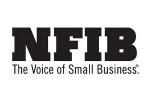CHICAGO — Recent Consumer Price Index (CPI) increases are making front-page headlines across the country, with impacts seen and felt in every industry, including dry cleaning. Sure, rising CPI directly correlates to the cost of financing equipment, but it can also have a significant ripple effect on other cost centers, such as maintenance and repair (M&R). Knowing how to navigate this, as well as understanding your options, can potentially save significantly toward your company’s bottom line.
The CPI measures the price of many goods and services, including cleaning products, groceries, clothes, restaurant meals, recreation and vehicles — light vehicles as well as commercial. According to a recent CPI report, price pressures remained elevated year-over-year. The CPI accelerated 8.3% in April, more than the 8.1% estimate and near the highest level in more than 40 years, according to CNBC.
Fleet Executives Dealing with Inflation
One of the challenges cleaning distribution fleets are facing today is that there has been little or no inflation for many years. There's a whole generation of fleet professionals who have never had to deal with the CPI increase. They negotiated with their vendors for a long time, and prices mostly remained stagnant. Now suddenly, they're seeing two-, three-, and four-percent increases and must evaluate their options to keep costs under control as much as possible. Moreover, they need to answer to company leaders and provide alternate options and recommendations.
How M&R Is Impacted by CPI Increases
M&R is a significant area where cost control options exist. First and foremost, depending on your lease structure — full-service or unbundled — fleets may have an important choice when understanding what is included in their M&R costs. There are variable inputs that make up these costs and it’s not as simple as just looking at M&R as a single bucket, per se. Fleets must be able to dissect all critical M&R parts and components, such as tires, brakes, service, repair, etc.
Knowing Your Lease Structure is Important
Because of this, more fleet personnel are taking a closer look at unbundling their lease structure so they and their asset management partners can work with cleaning vendors and parts suppliers on the most cost-competitive components. However, in a full-service lease structure, fleets are confined to a single, bottom-line figure, with little power in negotiating.
One of the most significant differences between an unbundled and a full-service lease is how M&R costs are calculated. M&R is “front-loaded” in an FSL. Cleaning companies can pay a minimum of .07 per mile in year one versus .02 per mile when unbundling. All trucks have a two-year bumper-to-bumper warranty that can be extended to four years. Expenses for Year One include wearable items (tires, brakes) and preventive maintenance. A shorter truck life cycle produces long-term savings beyond the first year. In a UBL, the CPM average equals 5.675 cents over five years. However, in an FSL, fleets pay up to 9 cents per mile.
Rising CPI exacerbates this further since those rates are not flat. If the CPI increases, as it has recently, you will undoubtedly see an increase in your monthly payment.
Come back Tuesday for the conclusion of this article, where we’ll examine the importance of breaking down M&R costs to better plan for the future.
Have a question or comment? E-mail our editor Dave Davis at [email protected].























